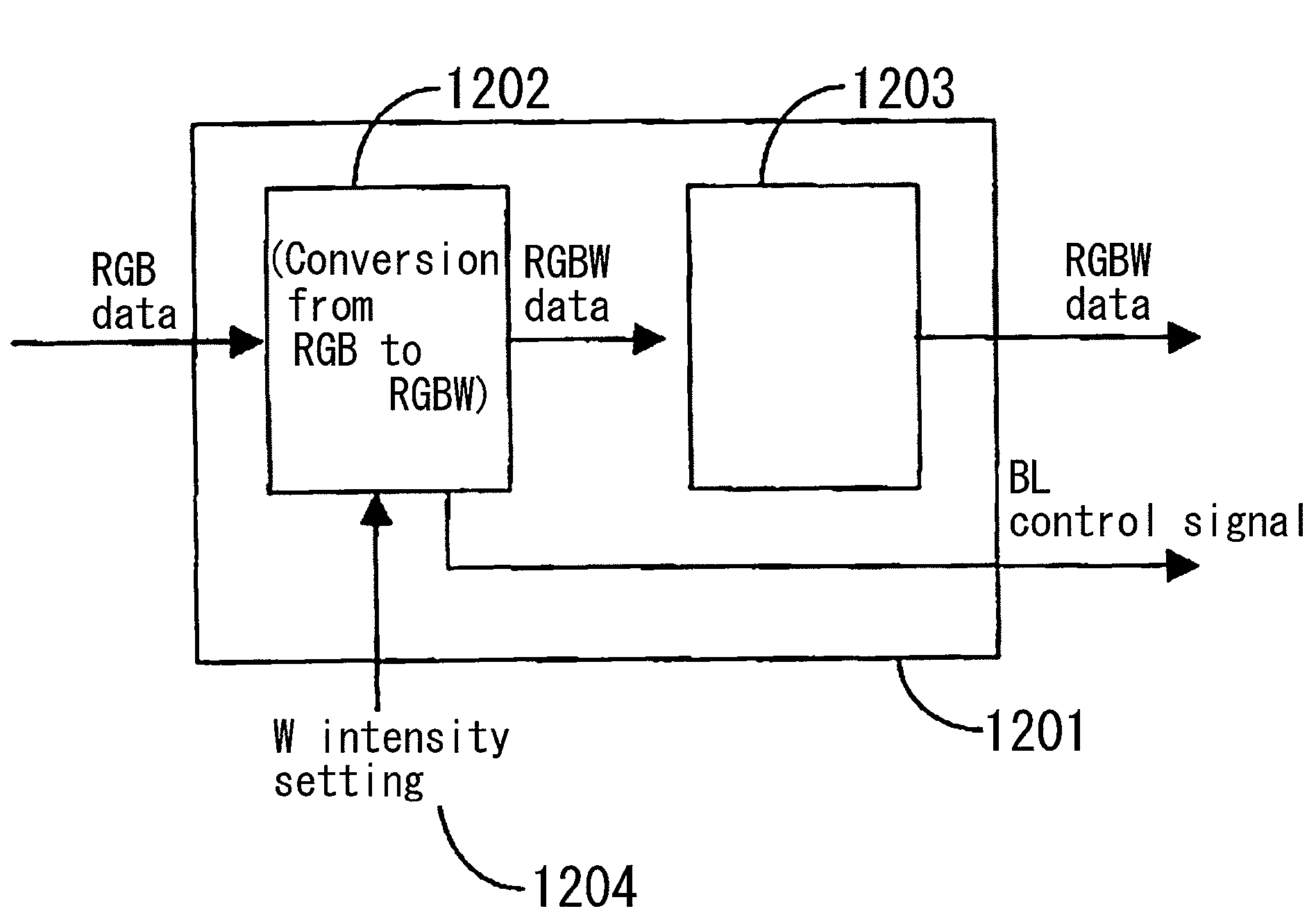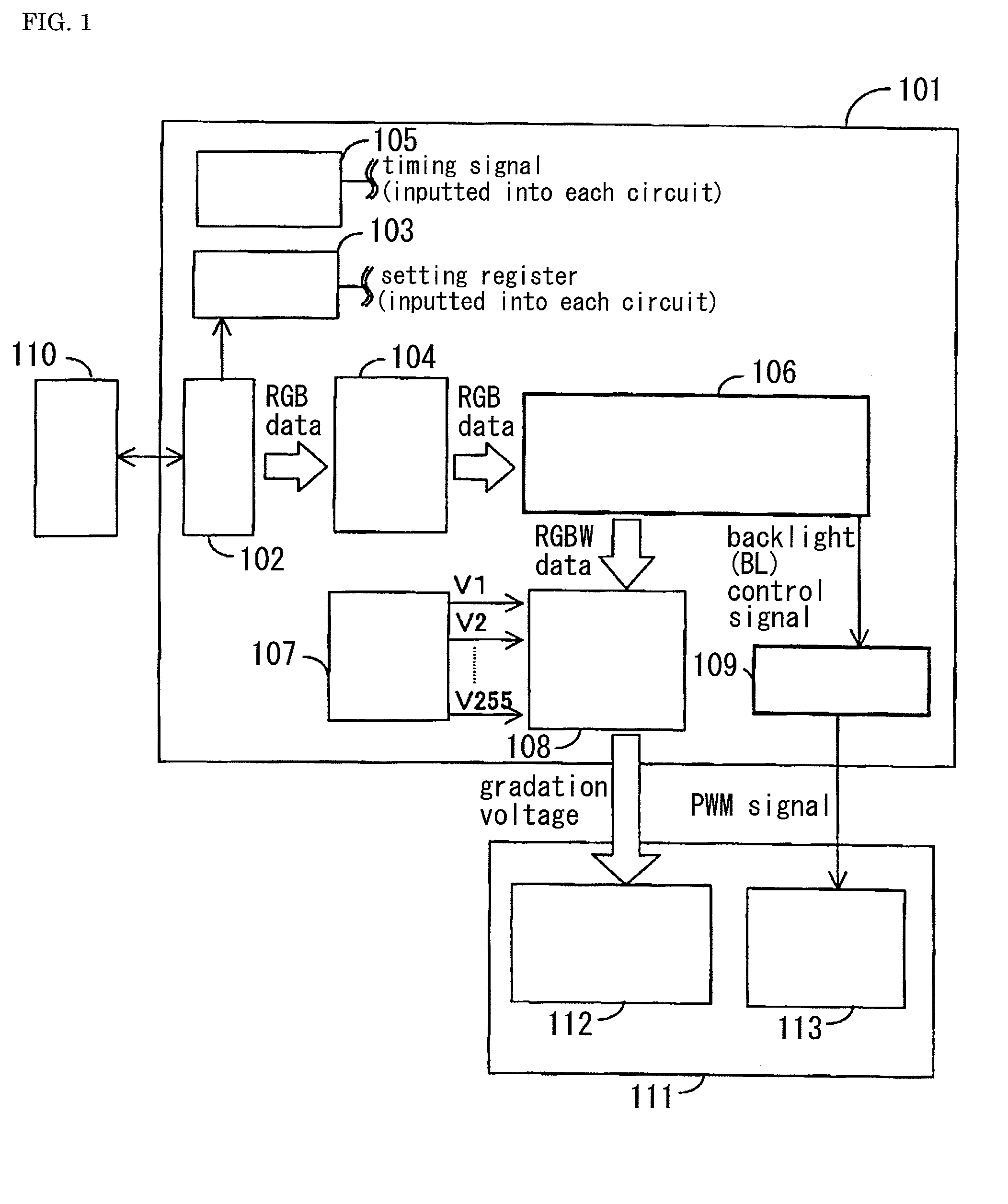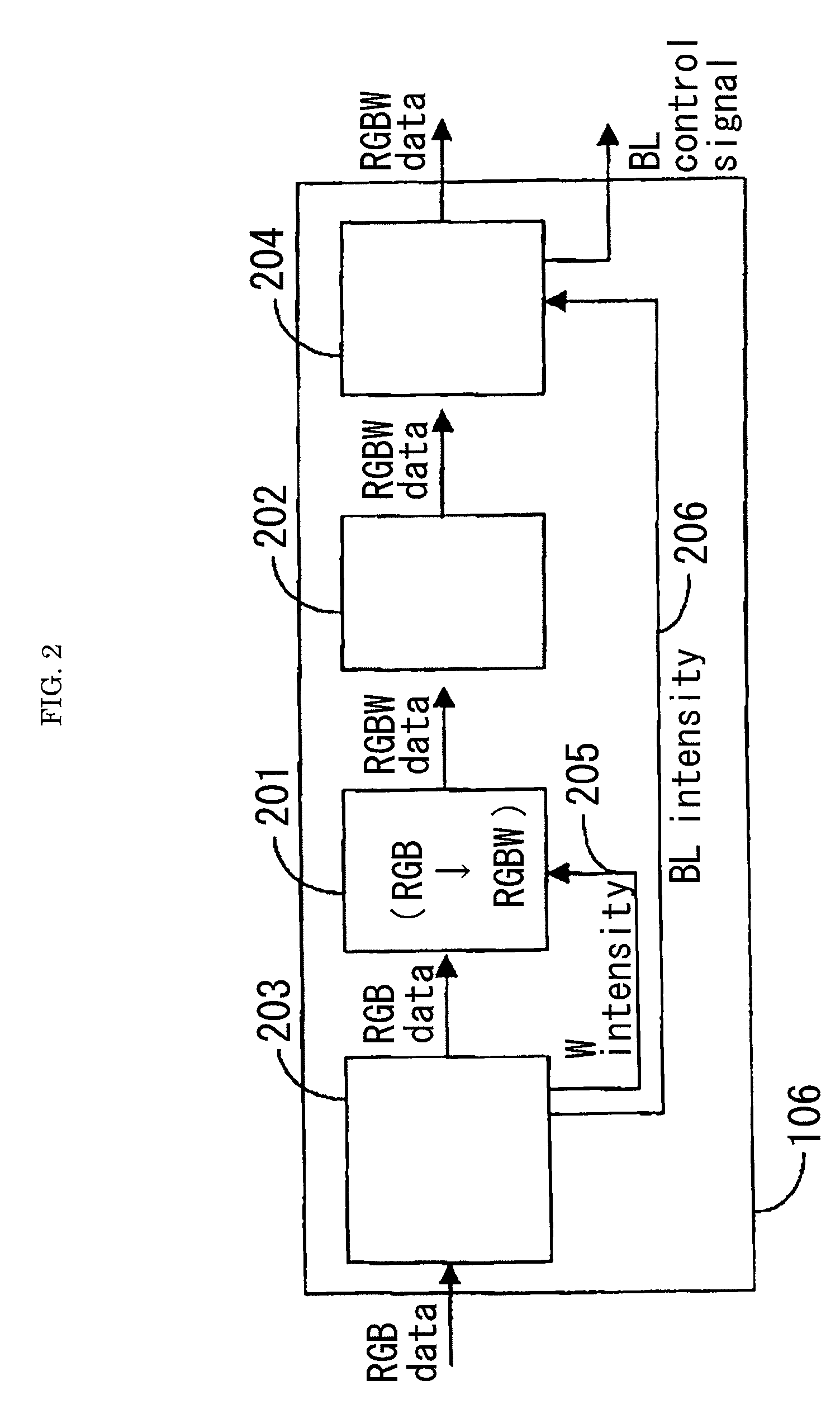Display Device
a display device and display screen technology, applied in the field of display devices, can solve the problems of reducing affecting the image quality, so as to reduce the brightness of a single color, reduce the power, and improve the image quality.
- Summary
- Abstract
- Description
- Claims
- Application Information
AI Technical Summary
Benefits of technology
Problems solved by technology
Method used
Image
Examples
first embodiment
[0037]The first embodiment of the present invention is described in reference to FIGS. 1 to 5. The first embodiment is characterized by setting the W (white) intensity and BL (backlight) brightness ratio in accordance with the ratio of the saturation pixels and the ratio of the W pixels in the image data (for example, the ratio of the numbers within the image in one frame). FIG. 1 is a diagram showing the configuration of the data driver in the liquid crystal display device according to the first embodiment of the present invention. FIG. 2 is a diagram showing the configuration of the processing portion for conversion from RGB to RGBW in FIG. 1. FIG. 3 is a graph for the explanation of a method for calculating the W intensity in the W intensity calculating circuit in FIG. 2. FIG. 4 is a diagram showing the configuration of the W intensity calculating circuit in FIG. 2. FIG. 5 is a diagram showing the detailed configuration of the low power backlight control circuit in FIG. 2. Satura...
second embodiment
[0047]Next, the second embodiment of the present invention is described in reference to FIGS. 1, 2 and 6 to 8. The second embodiment is characterized in that the W intensity and the BL intensity are set in the same manner as in the first embodiment, and in addition the relational equation between the saturation ratio and the W intensity in the image data for calculating the W intensity is independent from among computer graphic images, user interface images (CG / UI images) and natural images / moving images, and thus the relational expression between the saturation ratio and the W intensity in the above described image data is selected through the setting of the register.
[0048]FIGS. 1 and 2 show the second embodiment in the same manner as in the first embodiment. FIG. 6 is a graph for the explanation of the method for calculating the W intensity in the W intensity calculating portion in FIG. 2 according to the second embodiment. FIG. 6(B) is different from FIG. 3(B) used for the explan...
third embodiment
[0053]Next, the third embodiment of the present invention is described in reference to FIGS. 1, 2, 6 and 9 to 11. The third embodiment has a relational expression between the saturation ratio and the W intensity independent in the CG / UI images and in the natural images / moving images, respectively, in the same manner as in the second embodiment, and in addition the above described two relational expressions are characterized by being determined when the image data automatically detects whether the image is characterized as a CG / UI image or as a natural image / moving image. FIGS. 1 and 2 show the third embodiment in the same manner as the first embodiment.
[0054]FIG. 9 is a graph for the explanation of a method for determining whether the image is characteristic as a CG / UI image or the image is characteristic as a natural image / moving image from the relational expression between the saturation ratio and the W intensity in FIG. 6 as described in the second embodiment. FIG. 9(A) shows an ...
PUM
 Login to View More
Login to View More Abstract
Description
Claims
Application Information
 Login to View More
Login to View More - R&D
- Intellectual Property
- Life Sciences
- Materials
- Tech Scout
- Unparalleled Data Quality
- Higher Quality Content
- 60% Fewer Hallucinations
Browse by: Latest US Patents, China's latest patents, Technical Efficacy Thesaurus, Application Domain, Technology Topic, Popular Technical Reports.
© 2025 PatSnap. All rights reserved.Legal|Privacy policy|Modern Slavery Act Transparency Statement|Sitemap|About US| Contact US: help@patsnap.com



